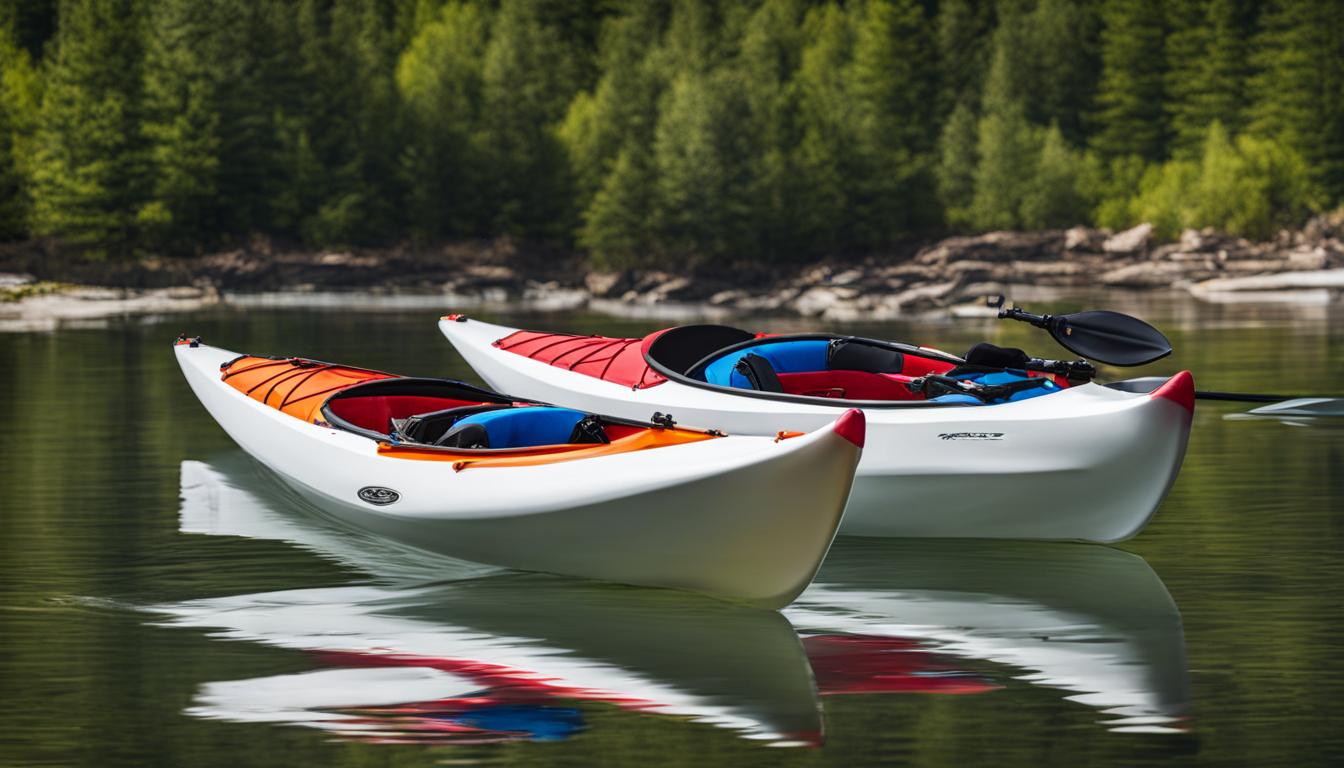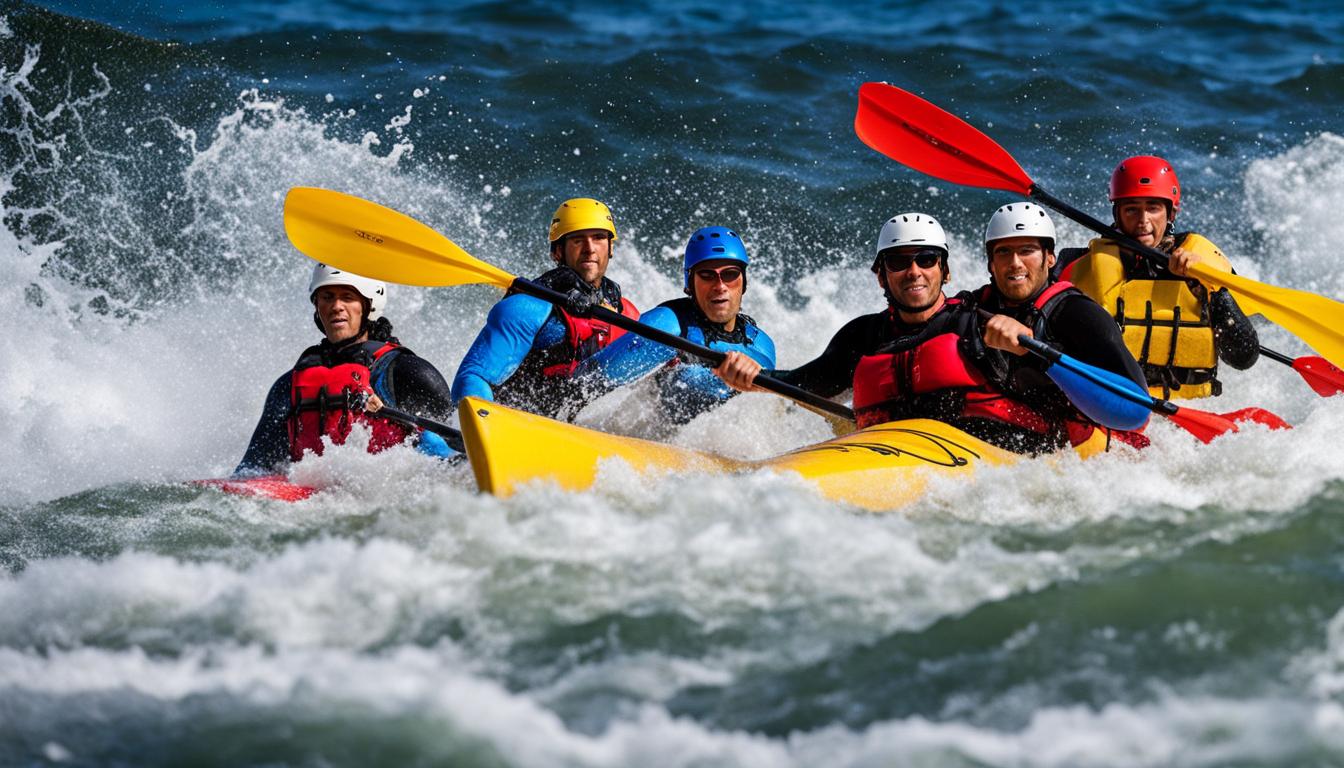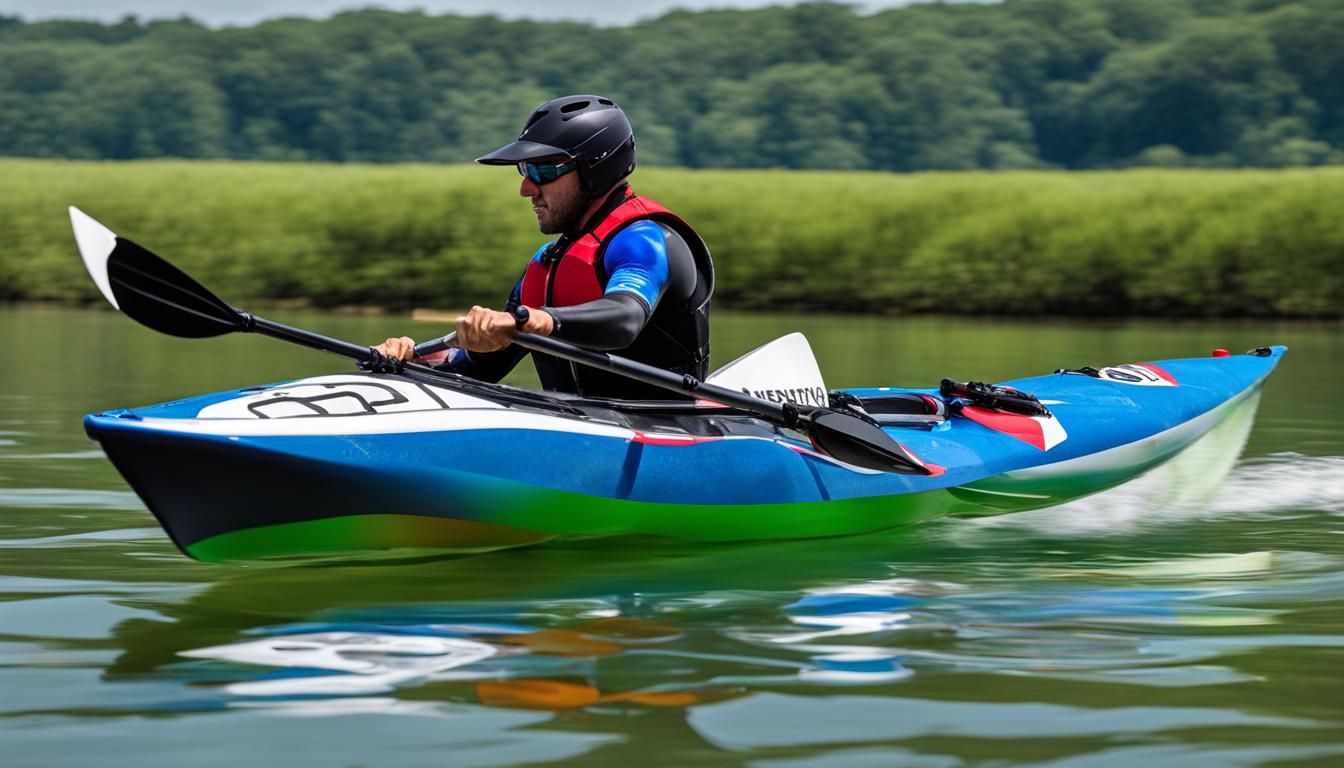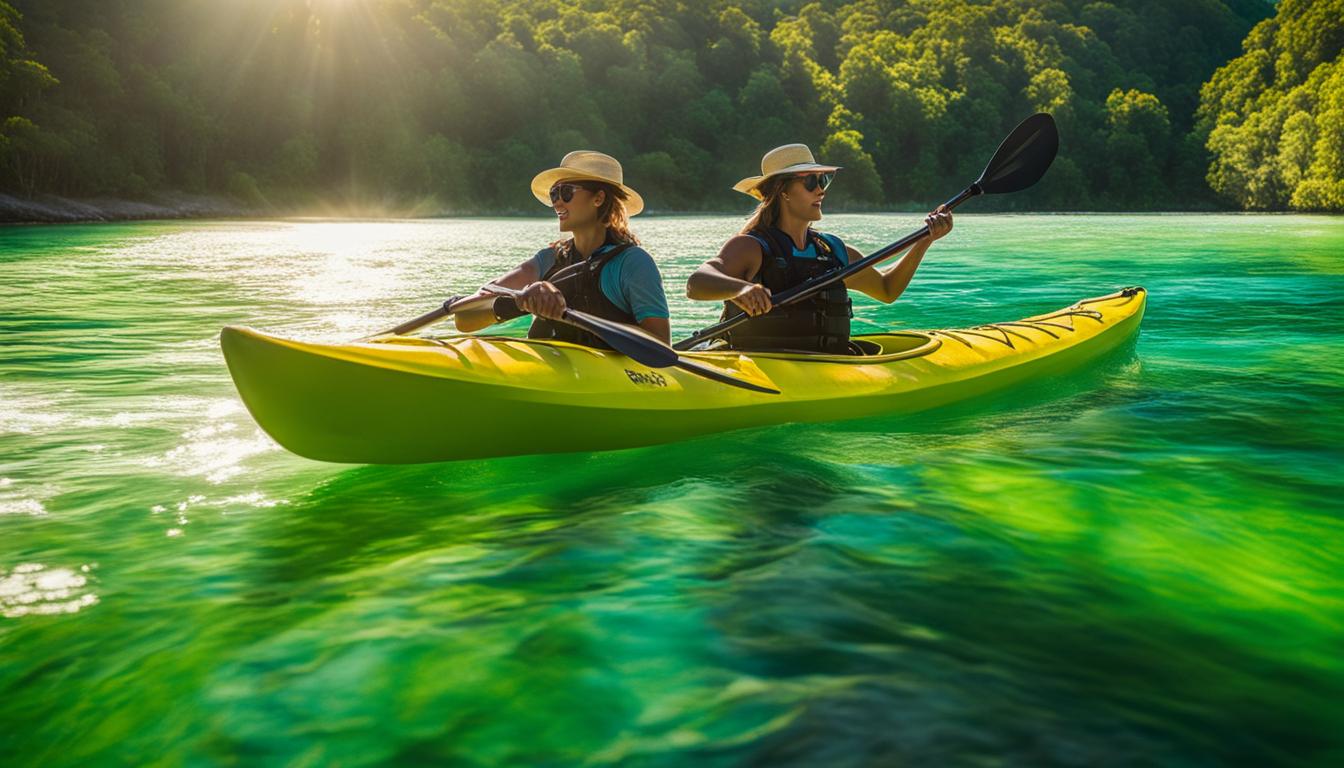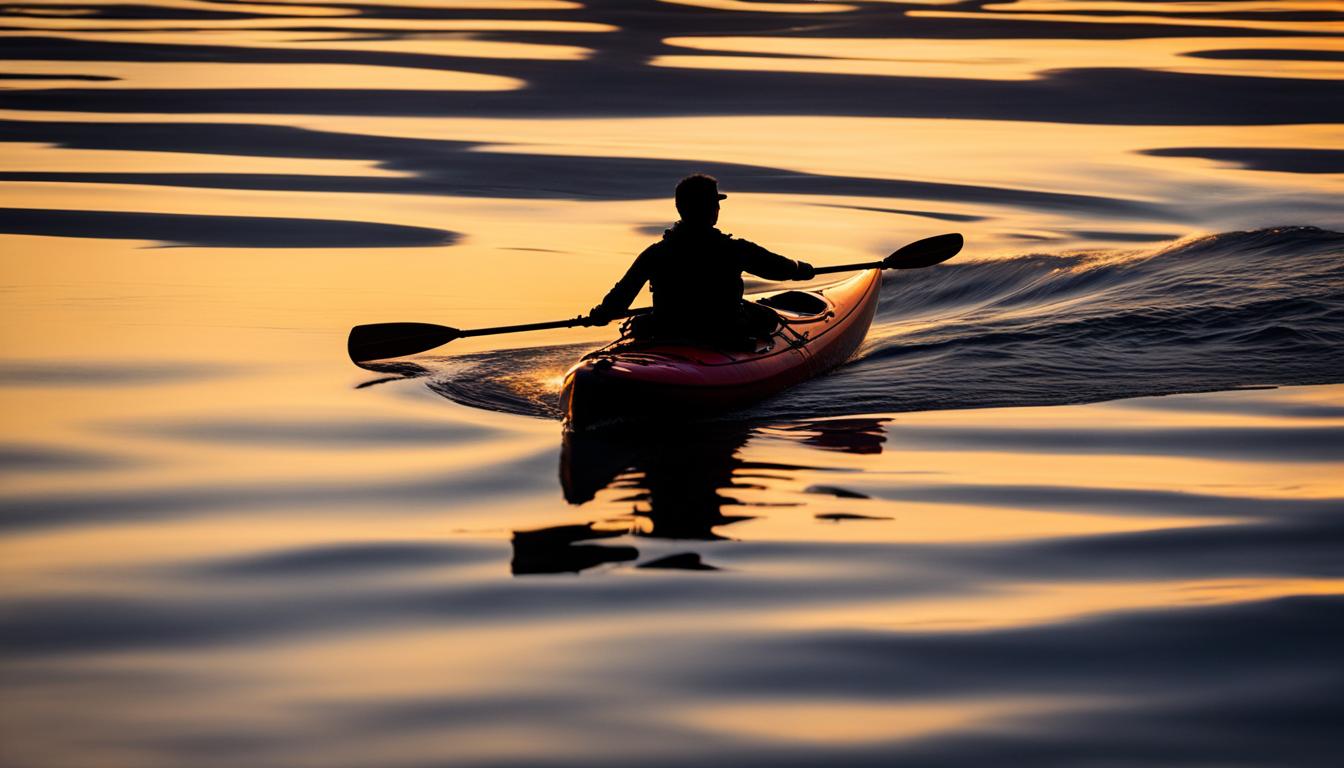When it comes to kayaking, choosing the right type of kayak can make a big difference in your experience on the water. Sit-inside and sit-on-top kayaks are two popular options, each with their own advantages and considerations. In this article, we will compare these kayak designs in terms of speed and stability, helping you make an informed decision.
Key Takeaways:
- Sit-inside and sit-on-top kayaks are two different designs with their own benefits and considerations.
- Sit-inside kayaks provide protection from the elements and better secondary stability.
- Sit-on-top kayaks are more user-friendly and offer easier entry and exit.
- The speed of a kayak is influenced by its design, with longer and narrower kayaks generally being faster.
- Stability varies between sit-inside and sit-on-top kayaks, with sit-inside kayaks being more stable in rough waters.
Speed Comparison: Sit-inside vs. Sit-on-Top Kayaks
When it comes to kayak speed, the design of the kayak plays a significant role. Sit-inside and sit-on-top kayaks have different characteristics that can affect their speed in the water.
Sit-inside kayaks, especially touring or sea kayaks, are typically longer and narrower. This sleek design allows them to cut through the water with less resistance, resulting in increased speed. They are designed for efficiency and are favored by experienced paddlers who prioritize speed and performance. The longer waterline of sit-inside kayaks contributes to their improved speed capabilities.
On the other hand, sit-on-top kayaks are wider and have a flatter hull. While this design provides greater stability, it also creates more surface area in contact with the water, which can slow down the kayak. Sit-on-top kayaks are generally more beginner-friendly and popular for recreational paddling, where speed may not be the primary focus.
It’s important to note that the speed of a kayak is also influenced by the paddler’s skill level and technique. A skilled paddler can maximize the speed potential of any kayak through efficient strokes and proper body positioning.
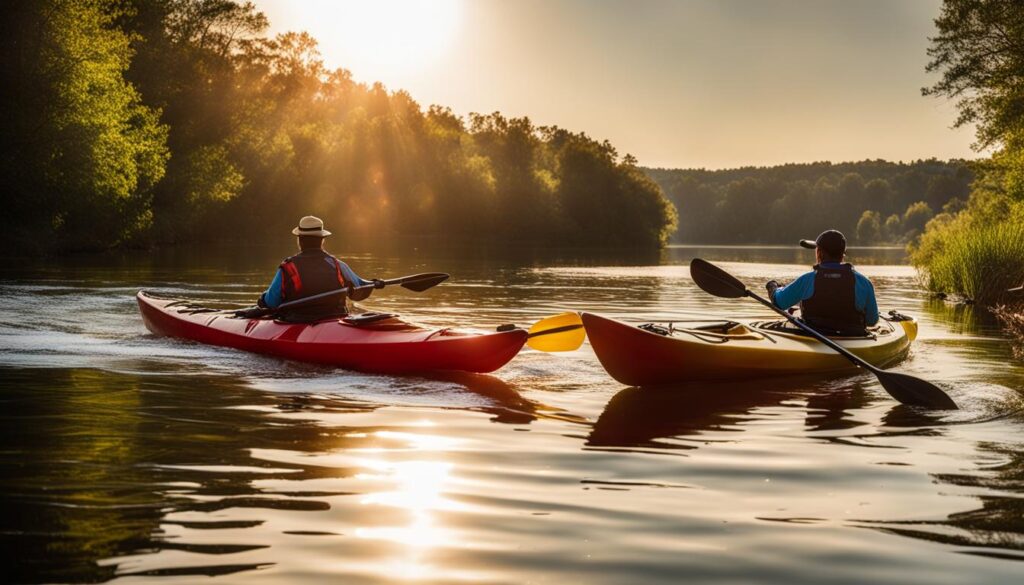
Speed Comparison Table: Sit-inside vs. Sit-on-Top Kayaks
| Kayak Type | Speed |
|---|---|
| Sit-inside Kayak | Faster due to longer and narrower design |
| Sit-on-Top Kayak | Slower due to wider and flatter hull |
In summary, sit-inside kayaks are generally faster due to their streamlined design, making them ideal for experienced paddlers seeking speed and performance. Sit-on-top kayaks, while offering greater stability, tend to be slower due to their wider hulls. Your choice of kayak should align with your paddling goals and preferences, whether it’s the need for speed or leisurely exploration.
Stability Comparison: Sit-inside vs. Sit-on-Top Kayaks
When choosing between sit-inside and sit-on-top kayaks, one of the key factors to consider is stability. Sit-inside kayaks are known for their higher secondary stability, making them more stable in rough and choppy waters. This is due to the enclosed cockpit design and lower center of gravity, providing a sense of security and control. For experienced paddlers or those who plan to tackle challenging conditions, sit-inside kayaks are often the preferred choice.
On the other hand, sit-on-top kayaks offer higher primary stability, making them more stable on calm and flat waters. This makes sit-on-top kayaks ideal for beginners or recreational paddlers who prioritize ease of use and a stable platform. The open cockpit design allows for easy entry and exit, providing a sense of confidence for those new to kayaking. Sit-on-top kayaks are also self-bailing, meaning any water that enters the cockpit will drain out through built-in scupper holes.
User experiences with different kayak types vary. Some paddlers appreciate the additional stability provided by sit-inside kayaks, especially when navigating rough conditions or coastal adventures. Others enjoy the user-friendliness and easy entry and exit offered by sit-on-top kayaks, particularly for recreational activities in calm waters. Ultimately, the choice between sit-inside and sit-on-top kayaks depends on individual preferences, skill level, and the intended use of the kayak.
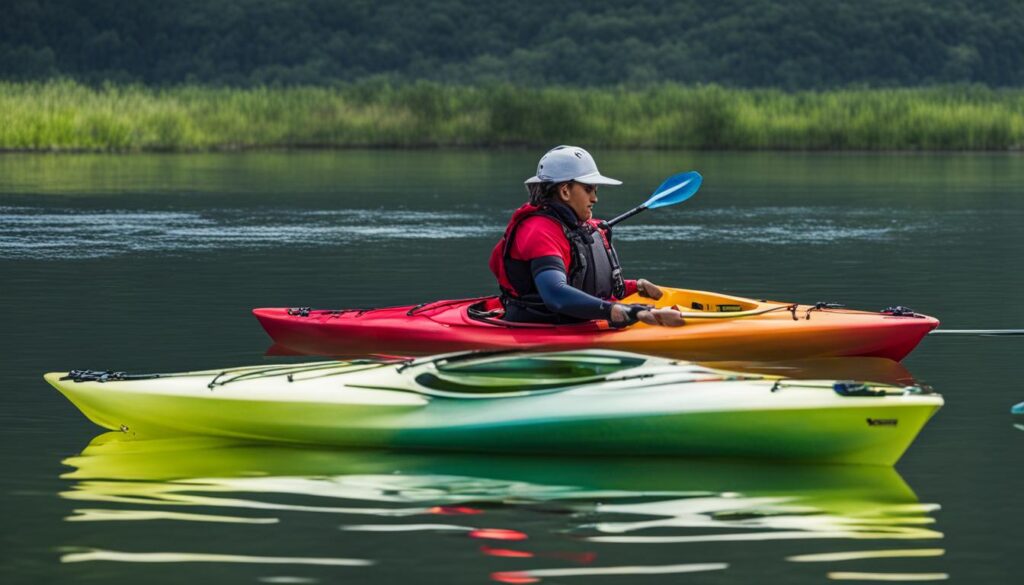
Comparison Table: Sit-inside vs. Sit-on-Top Kayaks
| Sit-inside Kayaks | Sit-on-Top Kayaks | |
|---|---|---|
| Design | Enclosed cockpit | Open cockpit |
| Stability | Higher secondary stability | Higher primary stability |
| Conditions | Rough and choppy waters | Calmer and flat waters |
| Entry/Exit | Requires climbing into cockpit | Easy entry and exit |
| Protection | Offers protection from elements | Less protection from elements |
| Warmth | Provides more warmth in colder weather | Less warmth in colder weather |
Table: Comparison between sit-inside and sit-on-top kayaks for stability.
Pros and Cons of Sit-Inside and Sit-on-Top Kayaks for Speed and Stability
When it comes to choosing between sit-inside and sit-on-top kayaks, there are several factors to consider in terms of speed and stability. Each type has its own benefits and challenges, and understanding these can help you make an informed decision.
Sit-Inside Kayaks
- Pros: Sit-inside kayaks offer better protection from the elements, making them ideal for colder weather conditions. The enclosed cockpit provides warmth and helps keep the paddler dry, particularly when equipped with a spray skirt. Additionally, sit-inside kayaks provide enhanced secondary stability, making them more suitable for challenging waters and experienced paddlers who enjoy coastal adventures.
- Cons: One downside of sit-inside kayaks is that they can be more difficult to re-enter if flipped, requiring specialized rescue skills. The enclosed cockpit can also feel confining to some paddlers and may restrict freedom of movement.
Sit-on-Top Kayaks
- Pros: Sit-on-top kayaks are known for their user-friendly design. They offer easy entry and exit, making them great for beginners or those who prefer a hassle-free experience. These kayaks are also self-rescue capable, meaning they can be easily flipped back over and re-entered by the paddler. Sit-on-top kayaks provide better primary stability, making them stable on calm and flat waters.
- Cons: Sit-on-top kayaks offer less protection from the weather compared to sit-inside kayaks. The open cockpit design can result in a wetter paddling experience. Additionally, sit-on-top kayaks are typically wider and slower compared to sit-inside kayaks, making them less suitable for those seeking greater speed on the water.
Ultimately, the choice between sit-inside and sit-on-top kayaks for speed and stability depends on your personal preferences and specific needs as a paddler. If you prioritize protection from the elements, enhanced secondary stability, and a warmer paddling experience, a sit-inside kayak may be the better option for you. On the other hand, if you value user-friendliness, easy entry and exit, self-rescue capabilities, and better primary stability, a sit-on-top kayak may be more suitable. Consider the pros and cons outlined here to make a well-informed decision that aligns with your kayaking goals.
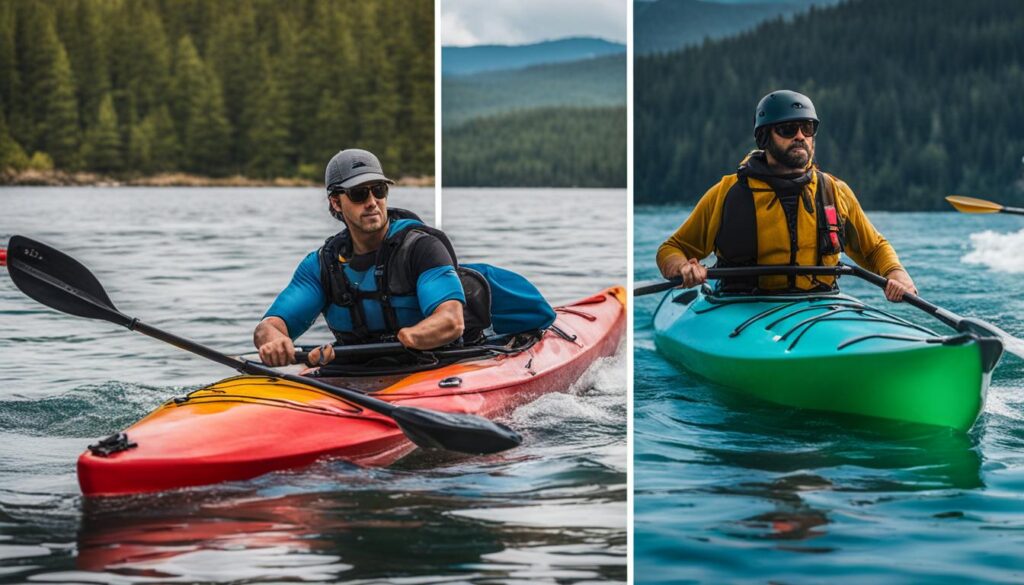
| Pros and Cons | Sit-Inside Kayaks | Sit-on-Top Kayaks |
|---|---|---|
| Protection from the elements | ✓ | ✗ |
| Warmth in cold weather | ✓ | ✗ |
| Secondary stability | ✓ | ✗ |
| Re-entry difficulty | ✗ | ✓ |
| Freedom of movement | ✗ | ✓ |
| User-friendly | ✗ | ✓ |
| Self-rescue capabilities | ✗ | ✓ |
| Primary stability | ✗ | ✓ |
| Speed | ✓ | ✗ |
Conclusion
When it’s time to choose a kayak, deciding between a sit-inside and sit-on-top design is a crucial step. Consider your paddling preferences, intended use, and the conditions you’ll be facing to make an informed decision.
If you prioritize protection from the elements and warmth, along with higher secondary stability, a sit-inside kayak is a great choice. It offers a snug cockpit and a spray skirt to keep water out, making it suitable for challenging waters and experienced paddlers.
On the other hand, if user-friendliness, easy entry and exit, and better primary stability are important to you, opt for a sit-on-top kayak. It is beginner-friendly, self-rescue capable, and provides stability on calm waters, perfect for recreational paddling.
Ultimately, the choice between sit-inside and sit-on-top kayaks is subjective and depends on your personal preferences and specific needs. Take into account the pros and cons discussed throughout this article and find the kayak design that suits you best for an enjoyable and safe paddling experience.
FAQ
What are the different types of kayaks available?
There are two basic styles of kayaks: Sit-on-Top (SOT) kayaks and Sit-Inside kayaks. Both types are available as singles or doubles and can come as hard shells or inflatables.
What are the major differences between sit-inside and sit-on-top kayaks?
Sit-inside kayaks have an enclosed cockpit and provide protection from the elements. They have a spray skirt to keep water out. Sit-on-top kayaks have an open cockpit and are self-bailing with drainage holes to let water drain out.
Which type of kayak offers more warmth in cold weather?
Sit-inside kayaks offer more warmth in cold weather due to their enclosed cockpit design.
Which type of kayak is more user-friendly?
Sit-on-top kayaks are generally more user-friendly with easier entry and exit compared to sit-inside kayaks.
Are sit-inside or sit-on-top kayaks faster?
The speed of a kayak depends on its design. Generally, longer and narrower kayaks are faster, which is often the case with sit-inside kayaks. Sit-on-top kayaks tend to be wider and slower.
Which type of kayak is more stable in rough waters?
Sit-inside kayaks generally have higher secondary stability, making them more stable in choppy, rough waters compared to sit-on-top kayaks.
Are sit-inside kayaks suitable for beginners?
Sit-inside kayaks can be suitable for beginners, particularly recreational ones, as they offer similar stability characteristics to sit-on-top kayaks. However, entry and exit may require more practice.
What should I consider when choosing between sit-inside and sit-on-top kayaks?
Consider factors such as paddling preferences, intended use, and the conditions you’ll be facing. Sit-inside kayaks offer more protection and warmth, as well as higher secondary stability. Sit-on-top kayaks are more user-friendly, provide easy entry and exit, and offer better primary stability.

